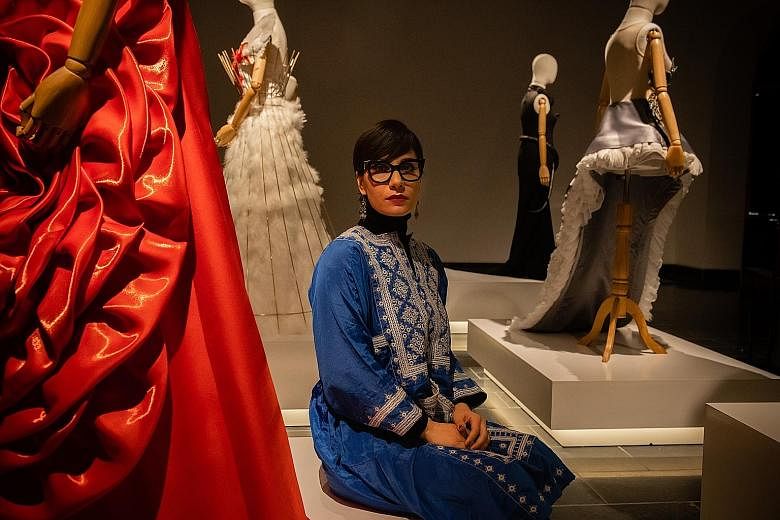KABUL • Inside an art exhibit called "Abarzanan" - Superwomen - stones the size of pomegranates hover above a mannequin wearing a dress fashioned from a white burial shroud.
The display commemorates a young Afghan woman, 19-year-old Rukhshana, who was stoned to death by village men in 2015.
She had fled an arranged marriage to a much older man and eloped with a young lover in a Taleban-controlled district in western Afghanistan.
The Superwomen exhibit, created by photographer and artist Rada Akbar, honours eight trailblazing women in Afghanistan and the region - among them an ancient queen and a 10th-century poet - at a fearful time for Afghan women.
After 19 years of halting gains after the collapse of Taleban rule, a Feb 29 agreement between the United States and insurgents has filled many Afghan women with dread. The agreement does not mention women's rights but does envision a return of the Taleban to a future Afghan government after US troops withdraw.
That prospect adds urgency to the Superwomen exhibit, which explores the refusal of Afghanistan's patriarchal society to acknowledge, much less respect, the achievements of courageous women.
"It's not as if someone gave us the rights we have - we earned them," Ms Akbar said. "Now we face going backwards with the Taleban, the enemies of women, art and culture."
The exhibit is showing at Chehilsoton Palace in Kabul, the country's capital. Each of the displays in the Superwomen show tells the story of a pioneer, and each features traditional Afghan artwork by female jewellery makers, embroiderers and calligraphers.
One piece represents Ms Khalida Popalzai, 32, a soccer player who played the game clandestinely as a girl despite persecution by the Taleban when the group ruled Afghanistan from 1996 to 2001.
Ms Popalzai later helped form the Afghan national women's soccer team and led a movement that exposed sexual abuse and harassment by male officials.
Her story is embodied by a woman's figure dressed in black. Three black-gloved hands clutch at her body.
One hand grasps a breast, one of its fingers shaped like a scorpion. Another hand, shaped like a snake, is wrapped around the figure's womb. The third hand creeps over her shoulder.
Ms Akbar said the hands represent oppression against Afghan women from three spheres - religion, politics and economics.
The figure's dress includes a long black train that unfurls across the floor. Visitors have to decide whether to step on the material to reach the next display or to find a way to step over it. The train is smeared with footprints.
"We, Afghan women and our allies, are righteously enraged," Ms Akbar said at the exhibit's opening ceremony. "It comes from generations of powerful men telling us to wait."
NYTIMES

